Best laptops with bright screens 2024: Great for outdoor use
These high-scoring laptops proved in our testing to offer ample screen brightness to use outdoors.
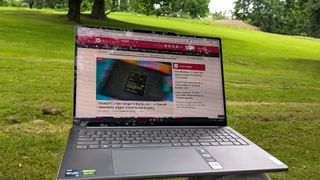
• The list in brief ↴
1. Best overall
2. Best design
3. Best 2-in-1
4. Best gaming
5. Best workstation
6. Best rugged
• How to choose
Part of the beauty of a high-end laptop is that it can go with you anywhere, affording you access to your workflow, your data, and a connection to the internet (especially if you opt for a 5G laptop).
Laptops, of course, can be a full desktop replacement with all the hardware you need to operate cooked right in. That includes a screen which, unlike one paired with your desktop, can't easily be changed or upgraded. This makes it crucial to get a screen that fits your needs from the start.
Whether you enjoy fresh air while you work or your job demands you spend a lot of time outdoors for fieldwork, a laptop with a screen that pushes well beyond the common 300 nits can solve glare issues caused by the sun.
That said, not all laptops have screens bright enough to counter sun glare, and even some of the best devices out there aren't suited for the outdoors. Therefore, I've put together this list of the best laptops with bright screens available now to help you find the perfect device.
There are options for creators who occasionally work outdoors, workstations for busy professionals, rugged PCs for fieldworkers, and even gaming laptops for those who want to have some fun away from a dark, RGB-infused gaming den.
The quick list
This quick list of laptops with bright screens might have enough information for you to make a final decision, but you can always click through for a more detailed breakdown containing pros, cons, and review highlights.
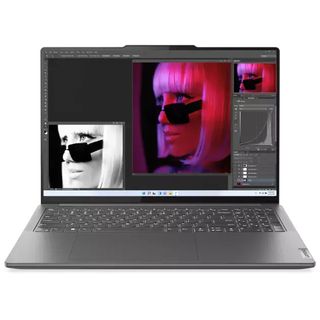
Best overall
Lenovo's Slim Pro 9i (Gen 8) is an outstanding 16-inch laptop built for creators who need a bright screen (beyond 600 nits, as tested) and strong performance hardware including a discrete NVIDIA Laptop GPU and 13th Gen Intel Core H-series CPUs.
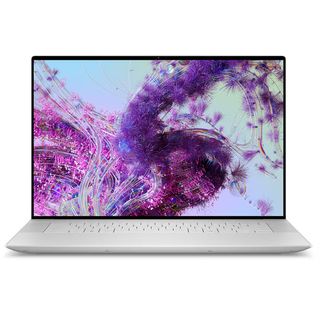
Best design
Dell's XPS 16 (9640) is a redesigned high-end laptop sporting Intel's Core Ultra CPUs and optional discrete NVIDIA RTX Laptop GPUs. Its 16-inch OLED display pushed beyond 400 nits, as tested, and it otherwise delivers accurate color reproduction across gamuts.
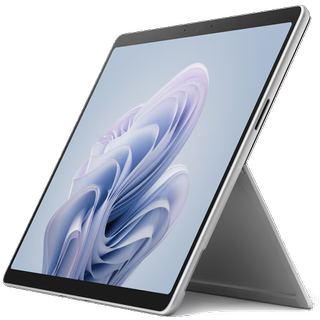
Best 2-in-1
The new Surface Pro 10 for Business hasn't changed much physically compared to its Pro 9 predecessor, but Microsoft has boosted the display brightness by about 33%. With about 600 nits brightness and an anti-reflective finish, it should be better prepared for use anywhere.
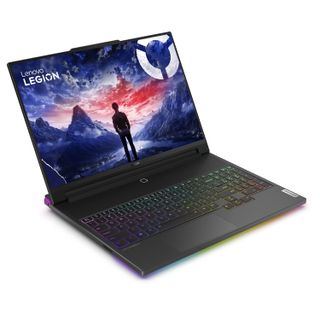
Best gaming
The Legion 9i (Gen 9) is a monster gaming laptop designed for enthusiasts who want ultimate performance in a mobile package. Its 16-inch mini-LED display is capable of up to 1,200 nits brightness, and it has an anti-glare finish to boot.
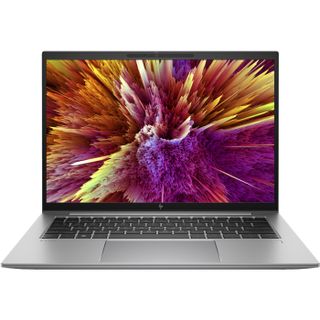
Best workstation
HP's ZBook Firefly 14 (G10) is an ultraportable workstation for professionals and creators who need specialized hardware and certifications. The QHD+ display we tested managed almost 550 nits brightness, and it has an anti-glare finish for further glare reduction.
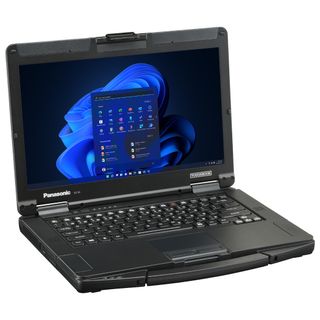
Best rugged
Panasonic's Toughbook 55 Mk3 for 2024 is built specifically for fieldwork where you know that your laptop is going to take some abuse. It's powered by Intel 13th Gen U-series vPro CPUs, and it has a 14-inch FHD screen option with up to 1,000 nits brightness.
The best laptops with bright screens in 2024
Why you can trust Windows Central
We're now getting into a more detailed breakdown of each of the best laptops with bright screens available now. We've reviewed all of these laptops at Windows Central except for the Surface Pro 10 for Business and Legion Pro 9i (Gen 9). We have, however, reviewed the Surface Pro 9 and Legion Pro 9i (Gen 8); they're physically similar, with the new models receiving mainly a performance refresh. Our experience with the older models thus applies to the new models as well.
Best overall
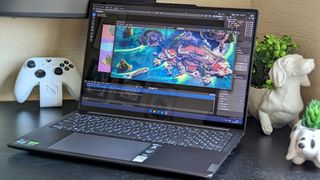

Specifications
Reasons to buy
Reasons to avoid
Lenovo's 16-inch Slim Pro 9i (Gen 8) is a sleek laptop that's great for creators who need a color-accurate display and some extra performance hardware for intensive tasks. It comes with up to a 13th Gen Intel Core i9-13905H processor (CPU), discrete NVIDIA RTX 4060 Laptop GPU, 32GB of LPDDR5x RAM (soldered), and a 1TB M.2 PCIe 4.0 NVMe SSD. There's also a second M.2 slot if you'd like to add another PCIe 3.0 SSD.
The keyboard and touchpad are similar to those found in Yoga laptops (of which this is a non-convertible offshoot). The number pad promotes productivity, keys offer ample travel, and there's a sizable touchpad for easy pointing. Lenovo includes six speakers with Dolby Atmos, some of which flank the keys for unmuffled sound.
A mini-LED display is the real draw, especially if you're in search of a bright screen. It has a 3200x2000 (3.2K) resolution, 165Hz refresh rate, 100% color reproduction across sRGB, AdobeRGB, and DCI-P3 color gamuts, and Dolby Vision for improved HDR support. Even without HDR enabled, the screen was able to hit 615 nits in our testing. It does have a glossy finish due to the touch functionality, but brightness this high can mostly cut through the glare.
In our Slim Pro 9i (Gen 8) review, Windows Central Editor Ben Wilson remarked, "The combination of a high-end Intel 13th Gen mobile CPU and a perfectly capable (if entry-level) NVIDIA 40-Series GPU easily handles intensive 3D rendering. It's all displayed on a gorgeous Mini-LED panel with a potential brightness that genuinely performs in natural lighting and is housed in a sleek chassis with some of the best laptop speakers I've ever heard."
The only major downsides here are a lack of extra USB-C ports (there are plenty of other ports) and average battery life when the system is under load.
Read our in-depth Lenovo Slim Pro 9i (Gen 8) review
Best design
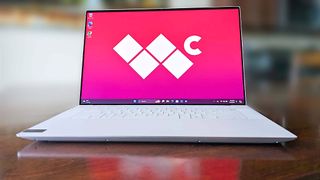

Specifications
Reasons to buy
Reasons to avoid
Dell's latest XPS 16 (9640) might not have the best selection of ports, and its keyboard/touchpad design isn't for everyone, but it is undeniably one of the most futuristic-looking Windows laptops on the market today.
In our XPS 16 (9640) review, Windows Central Editor Rebecca Spear said, "The XPS 16 will look good in both professional and casual environments. It feels like it is built to last with a solid chassis and smooth-moving hinge, making the lid easy to open or shut. I cannot tell you how much I love the soft feel of the material used around the keyboard."
The laptop can be configured with up to an Intel Core Ultra 9 185H CPU, NVIDIA RTX 4070 Laptop GPU, and plenty of RAM and storage. Dell offers a couple of 16.3-inch display options, ranging from FHD+ to UHD+ resolutions. The high-res option has an OLED panel with anti-reflective finish, which further helps it cut out glare. In our testing, we saw 410 nits brightness. The OLED panel delivers 100% sRGB and DCI-P3 color reproduction, dropping to 89% in the AdobeRGB gamut.
This laptop has the lowest brightness of all featured in this specific collection, but the 400+ nits with an anti-reflective finish should nevertheless be the right combination for occasional outdoor work.
Read our in-depth Dell XPS 16 (9640) review
Best 2-in-1
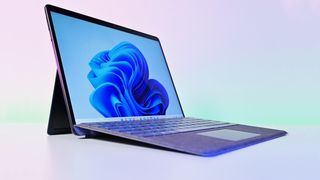
3. Surface Pro 10 for Business
Specifications
Reasons to buy
Reasons to avoid
The Microsoft Surface Pro 10 for Business was unveiled in March 2024, and we're still expecting a consumer version with a Qualcomm Snapdragon X CPU later this year. If you're not interested in Windows on Arm or you just need a quality 2-in-1 right now, the Pro 10 for Business should still be a great choice.
It hasn't changed much physically since the Surface Pro 9 we reviewed favorably, mostly receiving a performance upgrade and some camera and screen updates. The Pro 10 for Business is powered by Intel's Core Ultra CPUs with NPU for AI tasks, and you can configure it with up to 64GB of RAM and 1TB of M.2 PCIe 4.0 NVMe SSD storage.
The 13-inch touch display, still with its tall 3:2 aspect ratio, has a 2880x1920 (2.8K) resolution, 120Hz refresh rate, and up to 600 nits brightness without HDR enabled. That's about 33% brighter than the Pro 9's screen. It also has an anti-reflective finish to further reduce glare.
Another area where the Pro 10 for Business improves over its predecessor is camera quality. The front camera now has a 1440p front-facing camera with a 144-degree ultrawide lens. It's joined by a 10.5MP world-facing camera on the back of the tablet.
Read our in-depth Surface Pro 9 review
Best gaming
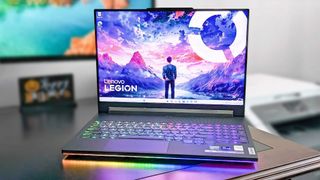
4. Lenovo Legion 9i (Gen 9)
Specifications
Reasons to buy
Reasons to avoid
Lenovo's Legion 9i is the company's premier gaming laptop, and if you can get past the price you'll love the insane performance and available features. It can deliver a gaming experience that's on par or better than a lot of desktop gaming PCs, and it has a stellar mini-LED display with tons of brightness.
We reviewed the Legion 9i (Gen 8), in which Editor Rebecca Spear noted, "This 2023 model can easily handle demanding ultra graphics settings in the latest video games while providing smooth gameplay and a steady frame rate of around 60 FPS. The three performance modes can easily be toggled to fit your needs, and the laptop's liquid cooling system allows it to moderate itself efficiently."
The ninth-gen model featured here is already out, but it's mostly a performance upgrade compared to the Gen 8 model we reviewed. You can now get the laptop with up to an Intel Core i9-14900HX CPU, NVIDIA RTX 4090 Laptop GPU, 64GB of RAM, and 2TB of SSD storage.
The 16-inch mini-LED display remains unchanged for the new generation. It measures 16 inches with a 3200x2000 (3.2K) resolution and 165Hz refresh rate, plus it manages up to 1,200 nits brightness (or around 700 nits without HDR enabled).
The anti-glare finish further combats the effects of bright overhead lighting or sunlight. The screen manages perfect color across sRGB, AdobeRGB, and DCI-P3 gamuts, it features Dolby Vision and NVIDIA G-Sync support, and the mini-LED tech offers 1,536 local dimming zones for outstanding contrast and color.
Read our in-depth Lenovo Legion 9i (Gen 8) review
Best workstation
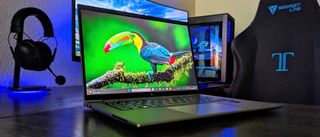
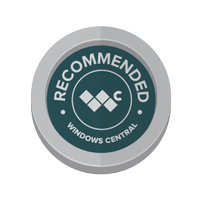
Specifications
Reasons to buy
Reasons to avoid
Professionals searching for a laptop with enterprise-level features, strong performance, and extra security will usually lean toward a mobile workstation. HP's ZBook Firefly 14 (G10) is one of the more compact options on the market, acting as a great entry point for those who don't need a ton of extra power (at least compared to the oversized workstations that can rival desktop PCs).
HP's thinnest and lightest workstation offers up to an Intel Core i7-1365U vPro CPU, NVIDIA RTX A500 discrete GPU, up to 64GB of DDR5-5200MHz RAM that can be upgraded after purchase, and up to 2TB of M.2 PCIe 4.0 NVMe storage that can also be upgraded.
In our HP ZBook Firefly 14 (G10) review, Windows Central's Zach Boddy highlighted the QHD+ DreamColor display with an anti-glare finish that came with their review unit, noting, "A 100% brightness of 542 nits makes the Firefly 14" easy to use even in sunlight, but it gets dim enough to use in near blackness, too. A taller 16:10 aspect ratio makes this laptop great for productivity and makes the 14 inches feel more spacious."
If you need more power than the average business laptop but want to keep things portable, the ZBook Firefly 14 (G10) should be a great pick with a bright screen.
Read our in-depth HP ZBook Firefly 14 (G10) review
Best rugged
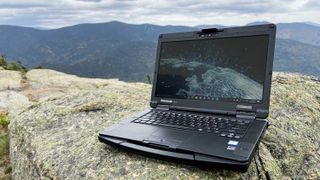

Specifications
Reasons to buy
Reasons to avoid
Panasonic's Toughbooks are some of the most durable PCs on the market, coming at you with a modular, semi-rugged design with a hard exterior shell, IP53 water and dust resistance, and a spill-resistant keyboard.
New to the 2024 models are Intel's 13th Gen vPro CPUs with faster integrated graphics, more RAM and SSD configuration options, and updated wireless standards. The laptop is nimble, and thanks to the option for two battery packs, the runtime can easily get up to 25 hours without needing a charge.
The 14-inch display still has a 16:9 aspect ratio with less screen real estate than the oft-used 16:10 ratio, and its color reproduction is not calibrated. Beyond these drawbacks, the FHD version should be a great pick for anyone working in the field (as this laptop is intended).
In Editor-in-Chief Daniel Rubino's Toughbook 55 Mk3 review, he tested the screen for 912 nits of peak brightness. With a matte finish, you should have no problems using the laptop outdoors during the day.
Read our in-depth Panasonic Toughbook 55 Mk3 review
How to choose the best laptop with a bright screen
The average laptop on the market today usually includes a screen that sits somewhere around 300 to 350 nits of brightness. Many modern laptops fall even lower than that, especially if you're shopping for a budget option, sitting somewhere between 250 and 300 nits.
While anywhere from 250 to 350 nits of brightness can get the job done when you're indoors (albeit with some glare from time to time, depending on the screen's finish), you might want extra brightness to help with working outdoors. That's where a laptop with at least 400 nits (as the bare minimum) should be considered; anything more provides an even easier view when you're working under harsh or bright lighting.
Lenovo's Slim Pro 9i (Gen 8) is one of the best laptops we've tested in the last year, with the right hardware and features to accommodate creators. It also happens to have a touch display with more than 600 nits brightness without HDR enabled.
For a more portable and versatile PC, Microsoft's Surface Pro 10 for Business brings a 13-inch touch display with 2880x1920 resolution, 3:2 aspect ratio, 120Hz refresh rate, and up to 600 nits brightness. That's about 33% brighter than the Pro 9, making the Pro 10 even more suited to use everywhere.
And if you're a gamer who enjoys their favorite titles outdoors, Lenovo's Legion 9i is a monster gaming laptop with the performance required to play modern titles at max settings. The 16-inch mini-LED screen has a 3200x2000 resolution, 165Hz refresh rate, and 1,200 nits brightness with 1,536 dimming zones for outstanding contrast and brightness control.
Does a screen's finish also make a difference?
Modern laptop screens usually come with either an anti-glare (matte), glossy, or anti-reflective finish. No matter how many nits of brightness the screen can offer, these finishes will have a different effect on your view.
A glossy screen will show the most glare and is usually tied into a touch display with a glass cover. Anti-reflective tech started popping up more frequently a few years ago, and it's a great way for glass screens to show dimmer glare.
Anti-glare (usually also called matte) displays are often used in business laptops with non-touch displays. Matte displays can still show glare, and they're not great for watching movies or graphical work.
Anti-reflective is really the best option, especially as laptops continue to blur the lines between work, creativity, and home use. You get to keep the clean look of the anti-reflective layer, and you get improved glare reduction even before taking brightness into account.
Get the Windows Central Newsletter
All the latest news, reviews, and guides for Windows and Xbox diehards.

Cale Hunt brings to Windows Central more than eight years of experience writing about laptops, PCs, accessories, games, and beyond. If it runs Windows or in some way complements the hardware, there’s a good chance he knows about it, has written about it, or is already busy testing it.